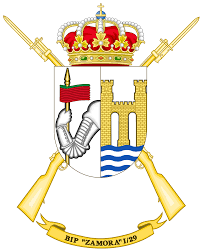Exploring Zamora: A Gem of Spanish Heritage and Culture

Introduction
Zamora, a stunning city in northwest Spain, is renowned for its rich history, unique architecture, and vibrant culture. As a significant cultural hub, it is often overlooked by tourists, despite its many attractions and historical significance. With its impressive Romanesque churches, the ancient castle, and the annual Semana Santa (Holy Week) celebrations, Zamora is a vital part of Spain’s cultural fabric and offers a unique glimpse into European history.
Historical Significance
Zamora boasts a remarkable history dating back to ancient times. The city was strategically located due to its position near the River Duero and has been influenced by various civilizations, including the Romans, Moors, and Christians. The legacy of these cultures is evident in the city’s architecture and historical landmarks, including the Cathedral of Zamora, which stands as a beautiful example of Romanesque design.
Architectural Marvels
The city is famous for its abundance of Romanesque churches; over twenty of them are found within the city limits. Notable examples include San Claudio, San Ildefonso, and Santa Maria de la Horta. Each church presents unique architectural features and intricacies, attracting historians and architecture enthusiasts alike. Zamora’s castle, built in the 11th century, is another significant monument, providing panoramic views of the city and surrounding landscapes.
Festivals and Culture
Zamora is perhaps best known for its Semana Santa celebrations, which are recognised as one of the most important Holy Week celebrations in Spain. These processions draw thousands of visitors each year, showcasing elaborate floats and the deep devotion of the local population. The vivid displays of passion and artistry throughout these celebrations allow participants and onlookers to experience the city’s rich cultural traditions first-hand.
Current Events and Tourism
Recently, Zamora has been working on increasing its visibility in the global tourism market. Local government initiatives aim to promote the city’s attractions, using digital marketing and social media platforms to reach a broader audience. The recent opening of new accommodations and tourism services reflects this effort, providing more options for visitors seeking to explore the charms of Zamora.
Conclusion
In conclusion, Zamora is a city that beautifully encapsulates the essence of Spanish history and culture, making it an important destination for those looking to explore beyond the more popular tourist locations. As efforts continue to promote its unique heritage and ongoing festivals, Zamora is likely to gain a stronger foothold in the tourism landscape, inviting more visitors to uncover its hidden treasures.









